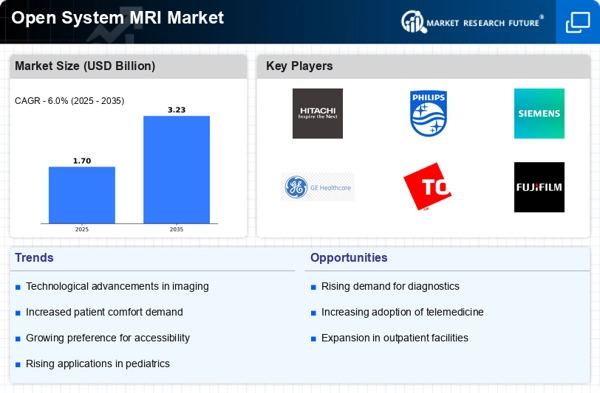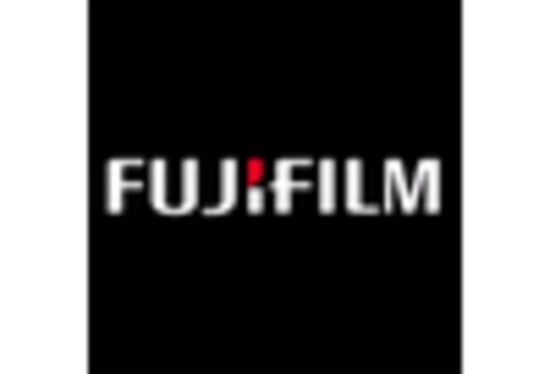Patient-Centric Healthcare Initiatives
The Open System MRI Market is benefiting from the broader trend of patient-centric healthcare initiatives. Healthcare providers are increasingly focusing on enhancing patient experiences and outcomes, which includes offering more comfortable imaging options. Open MRI systems are designed to accommodate a wider range of patients, including those with mobility issues or anxiety disorders. This shift towards patient-centered care is likely to drive the adoption of open MRI technology, as facilities seek to improve patient satisfaction and reduce the likelihood of scan cancellations. As a result, the Open System MRI Market is poised for growth, with an anticipated increase in market share as more facilities adopt these patient-friendly imaging solutions.
Rising Demand for Non-Invasive Imaging
The Open System MRI Market is experiencing a notable increase in demand for non-invasive imaging techniques. This trend is largely driven by the growing awareness among patients and healthcare providers regarding the benefits of non-invasive procedures. Open MRI systems offer a less claustrophobic experience, which is particularly appealing to patients with anxiety or those who are unable to tolerate traditional closed MRI machines. According to recent data, the preference for open MRI systems has surged, with a projected growth rate of approximately 7% annually. This shift towards non-invasive imaging not only enhances patient comfort but also improves diagnostic accuracy, thereby propelling the Open System MRI Market forward.
Technological Innovations in MRI Systems
Technological advancements play a crucial role in shaping the Open System MRI Market. Innovations such as improved magnet designs, advanced imaging software, and enhanced coil technology have significantly increased the capabilities of open MRI systems. These advancements allow for higher resolution images and faster scan times, which are essential for accurate diagnoses. Furthermore, the integration of artificial intelligence in imaging analysis is expected to streamline workflows and improve diagnostic outcomes. As a result, the Open System MRI Market is likely to witness a surge in adoption rates, with estimates suggesting a market growth of around 8% over the next few years.
Increasing Prevalence of Chronic Diseases
The Open System MRI Market is also influenced by the rising prevalence of chronic diseases, which necessitate advanced imaging solutions for effective diagnosis and management. Conditions such as cardiovascular diseases, neurological disorders, and musculoskeletal issues require precise imaging to guide treatment decisions. The World Health Organization has reported a steady increase in the incidence of these diseases, leading to a higher demand for MRI services. Consequently, healthcare facilities are increasingly investing in open MRI systems to cater to this growing patient population. This trend is expected to contribute to a robust growth trajectory for the Open System MRI Market, with projections indicating a compound annual growth rate of approximately 6%.
Regulatory Support for Advanced Imaging Technologies
Regulatory bodies are increasingly recognizing the importance of advanced imaging technologies, which is positively impacting the Open System MRI Market. Supportive regulations and guidelines are being established to promote the development and adoption of innovative MRI systems. This regulatory environment encourages manufacturers to invest in research and development, leading to the introduction of more efficient and effective open MRI systems. Additionally, favorable reimbursement policies for advanced imaging procedures are likely to enhance the financial viability of open MRI systems for healthcare providers. As a result, the Open System MRI Market is expected to experience accelerated growth, with a projected increase in the number of installations and utilization rates.


















Leave a Comment